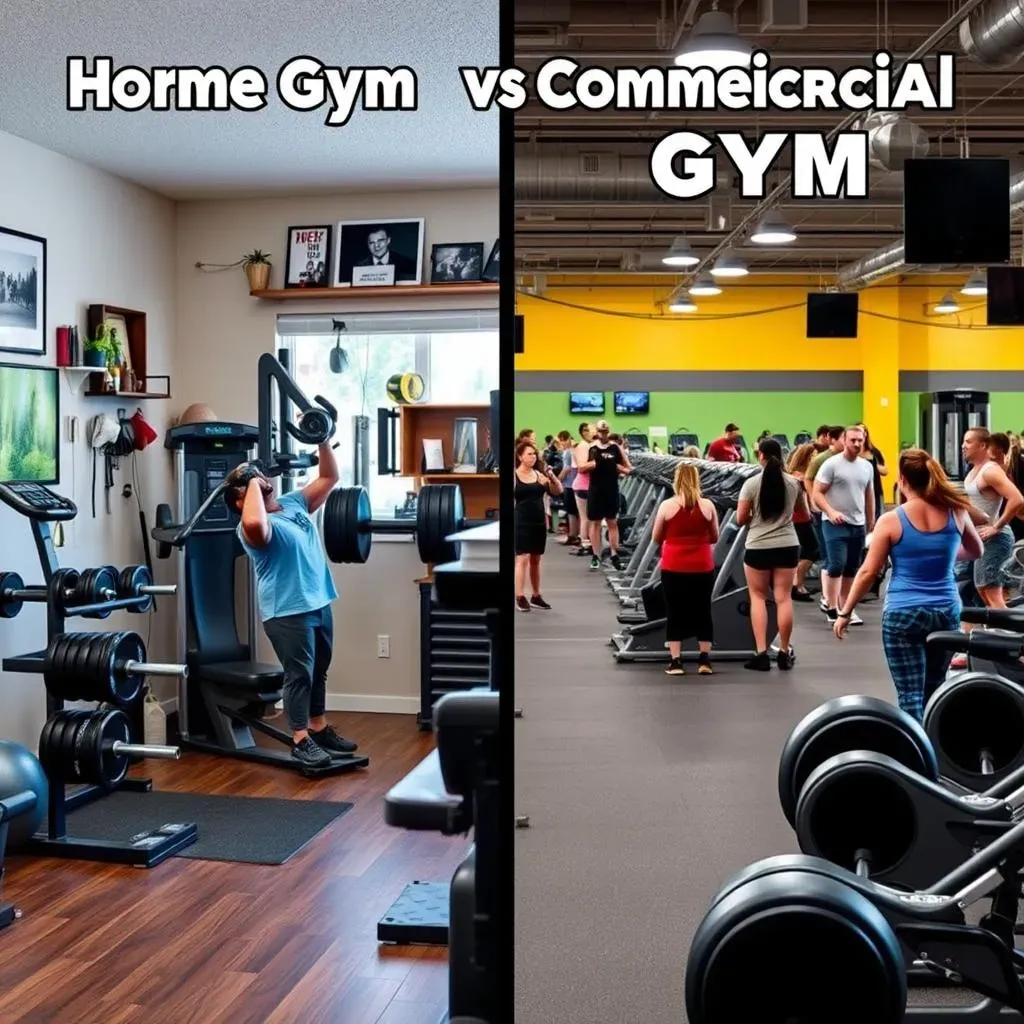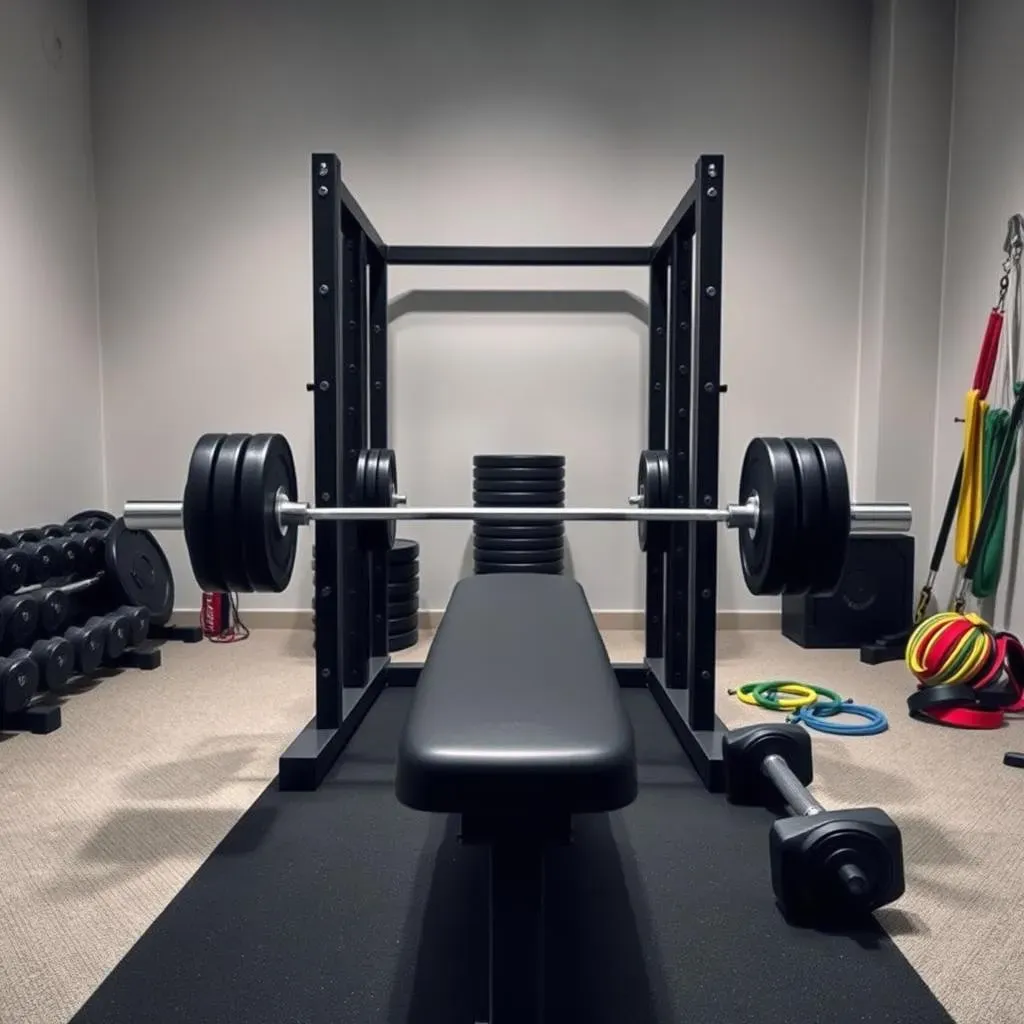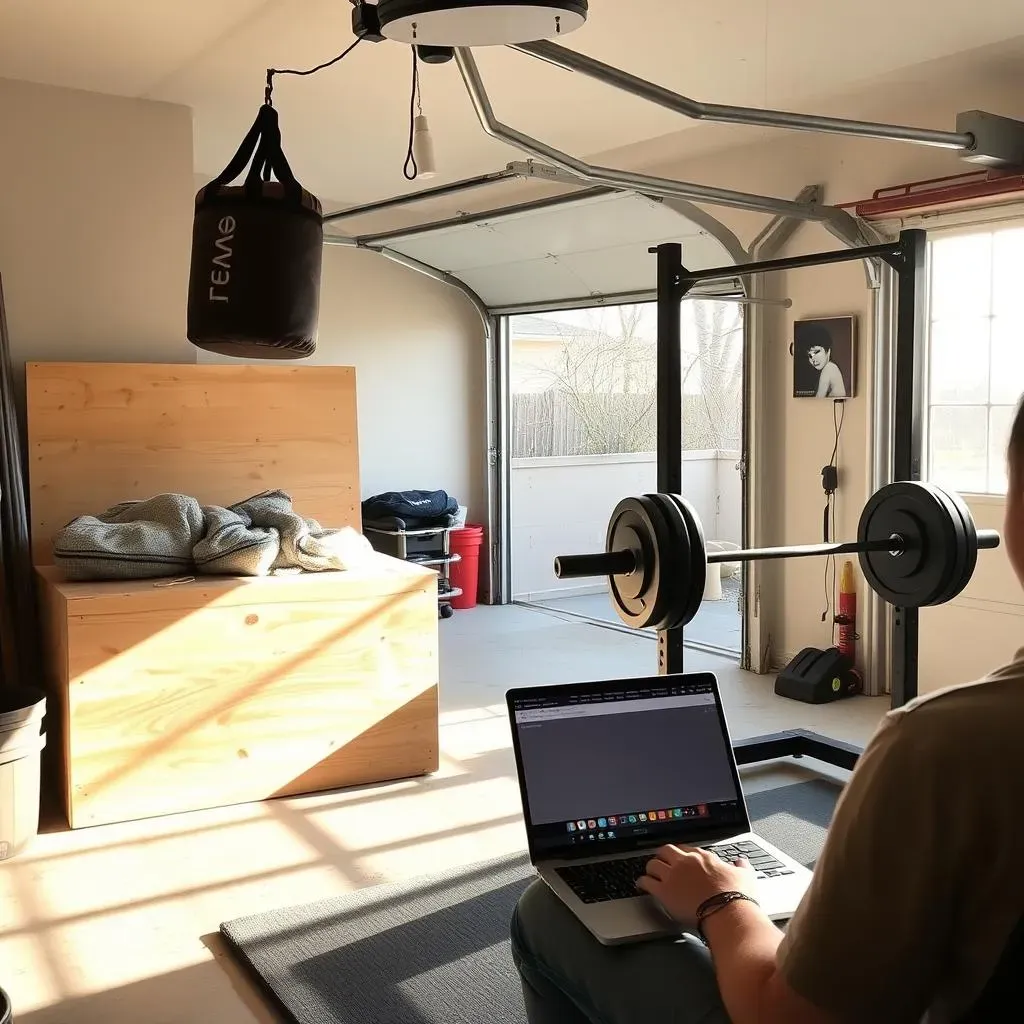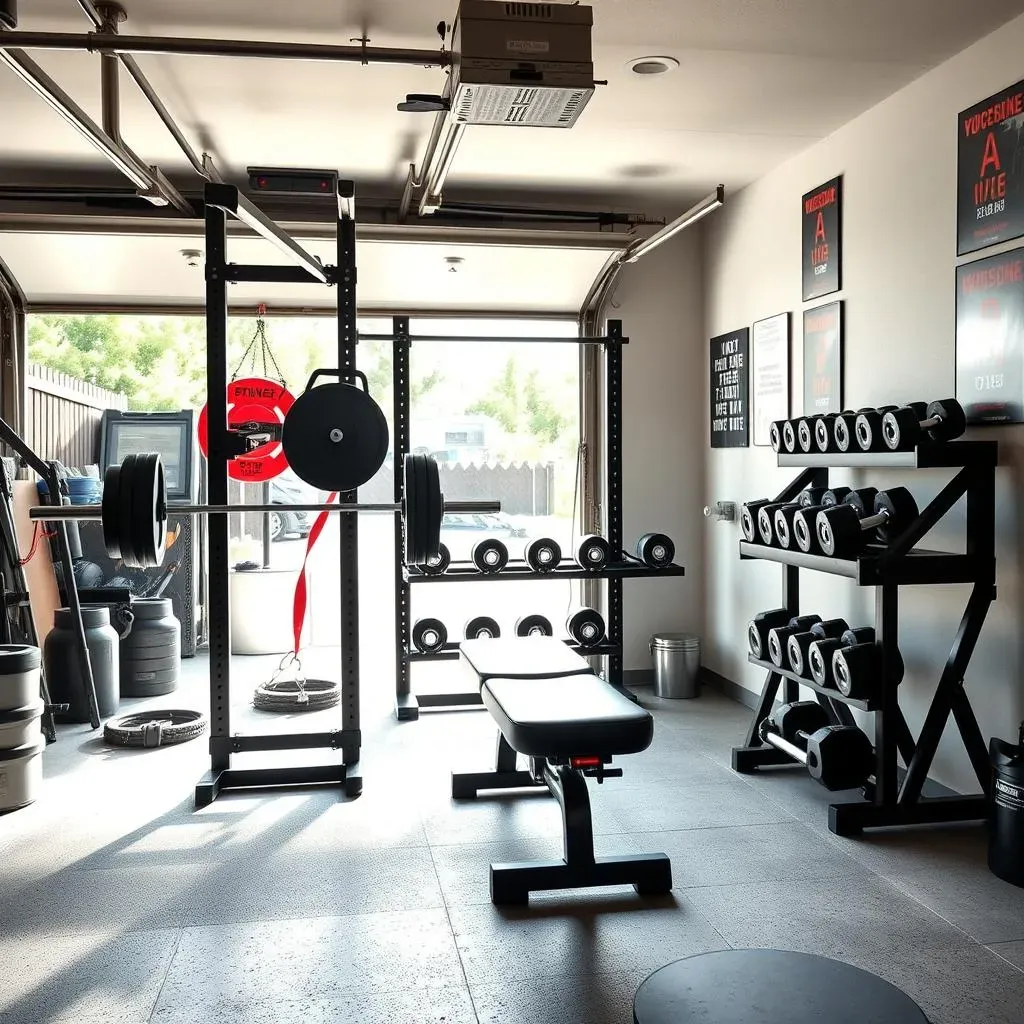Table of Contents
Tired of crowded gyms and membership fees? Dream of having a workout space that's always open, tailored just for you? You're not alone. More and more people are discovering the benefits of a home gym equipment setup. But where do you start? It can feel overwhelming, from choosing the right equipment to finding the perfect space. This guide is your roadmap to creating the ultimate home gym, whether you're on a tight budget or ready to invest in top-of-the-line gear. We'll break down the pros and cons of home gyms versus commercial spaces, explore essential equipment, and even show you how to save money with DIY projects and used gear. Plus, we'll help you find the ideal location for your home gym, no matter how limited your space might be. Get ready to transform your fitness routine and achieve your goals from the comfort of your own home. Let's dive in!
Home Gym vs. Commercial Gym: Weighing the Pros and Cons
Home Gym vs. Commercial Gym: Weighing the Pros and Cons
The Allure of the Home Gym: Convenience and Control
Let's be honest, battling traffic and waiting for equipment can kill your workout motivation. That's where the home gym shines. Imagine rolling out of bed and hitting the weights without leaving your house! No more crowded spaces, no more waiting, and you control the music. Plus, you can customize everything to your exact preferences. Want to blast heavy metal while you squat? Go for it! Prefer a quiet, zen-like atmosphere for yoga? No problem. A home gym puts you in the driver's seat, making fitness fit seamlessly into your life.
But it's not just about convenience. A home gym can also be a significant long-term investment. Think about all those monthly gym fees adding up over the years. With a home gym, you make an initial investment, and then you're set. Plus, you can choose equipment that specifically caters to your fitness goals, whether it's powerlifting, CrossFit, or just staying in shape.
Commercial Gyms: Community, Variety, and Expertise
Now, let's not write off commercial gyms just yet. They offer some serious advantages. For starters, the sheer variety of equipment is hard to beat. From state-of-the-art machines to specialized classes, you'll never run out of options. This can be especially appealing if you're someone who gets bored easily or enjoys trying new things. Plus, the social aspect of a commercial gym can be a huge motivator. Surrounding yourself with other fitness enthusiasts can push you to work harder and stay consistent.
Another big plus is access to expert guidance. Many commercial gyms offer personal training services, which can be invaluable if you're new to fitness or have specific goals in mind. A qualified trainer can help you develop a personalized workout plan, teach you proper form, and keep you accountable. This can significantly reduce your risk of injury and help you achieve faster results.
Feature | Home Gym | Commercial Gym |
|---|---|---|
Convenience | High | Low |
Cost (Long Term) | Lower | Higher |
Equipment Variety | Limited | High |
Social Aspect | Low | High |
Expert Guidance | Limited (unless you hire a private trainer) | Readily Available |
Essential Home Gym Equipment Setup: What You Really Need
Essential Home Gym Equipment Setup: What You Really Need
The Foundation: Barbell, Plates, and Rack
Alright, let's get down to brass tacks. If you're serious about building strength and muscle, a barbell, weight plates, and a squat rack are non-negotiable. Think of these as the holy trinity of home gym equipment. A good quality barbell, like the Rogue Bar 2.0, can handle a beating and will last you for years. Invest in a decent set of weight plates – you can always add more later as you get stronger. And a sturdy squat rack is essential for safety when performing squats, bench presses, and overhead presses. Don't skimp on this – your well-being depends on it!
Now, you might be thinking, "That sounds expensive!" And you're not wrong. But remember, this is an investment in your health and fitness. Plus, you can often find used equipment in good condition to save some money. Just make sure to inspect everything carefully before you buy it. This setup will allow you to perform a wide variety of exercises, targeting all major muscle groups. From squats and deadlifts to bench presses and overhead presses, the possibilities are endless.
Beyond the Basics: Bench, Dumbbells, and Accessories
Once you've got the foundation in place, it's time to expand your arsenal. A good weight bench is crucial for performing bench presses, dumbbell rows, and a variety of other exercises. Look for one that's sturdy, adjustable, and comfortable. A set of adjustable dumbbells is another great addition to your home gym. They're incredibly versatile and allow you to target specific muscles with precision. Plus, they take up much less space than a full set of fixed dumbbells.
Finally, don't forget about the accessories! Things like resistance bands, a jump rope, and a foam roller can add a ton of variety to your workouts and help you stay injury-free. Resistance bands are great for warm-ups, cool-downs, and adding extra resistance to exercises like squats and push-ups. A jump rope is a fantastic way to improve your cardio and coordination. And a foam roller is essential for relieving muscle soreness and improving flexibility. These little extras can make a big difference in your overall fitness journey.
Equipment | Why You Need It | Considerations |
|---|---|---|
Barbell | Foundation for strength training | Quality, weight capacity |
Weight Plates | Load the barbell | Material (iron vs. bumper), weight increments |
Squat Rack | Safety for squats and other exercises | Stability, adjustability |
Weight Bench | Bench press and other exercises | Sturdiness, adjustability, comfort |
Adjustable Dumbbells | Versatile for isolation exercises | Weight range, ease of adjustment |
Resistance Bands | Warm-ups, assistance, and rehabilitation | Different resistance levels |
DIY Home Gym Equipment Setup and Buying Used: Saving Money
DIY Home Gym Equipment Setup and Buying Used: Saving Money
Unleash Your Inner Handyman: DIY Home Gym Equipment
let's talk about saving some serious cash. You don't need to drop a fortune on fancy equipment to get a great workout. With a little creativity and some elbow grease, you can build some surprisingly effective gear yourself. For example, a simple plyo box can be constructed from plywood, providing a great tool for jump training and box squats. Sandbags are another fantastic DIY option. Just fill some heavy-duty bags with sand, and you've got a versatile weight for carries, squats, and presses. You can even build your own dip bars using some metal pipes and fittings. The possibilities are endless! Just be sure to prioritize safety and use sturdy materials.
But it's not just about building new equipment. You can also repurpose items you already have around the house. Old tires can be used for flipping and sledgehammer workouts. A sturdy chair can serve as a makeshift bench for certain exercises. And a backpack filled with books can be a great substitute for a weight vest. Get creative and think outside the box! You'll be surprised at what you can come up with. Remember, the goal is to find affordable alternatives that allow you to challenge yourself and progress towards your fitness goals.
The Thrill of the Hunt: Buying Used Home Gym Equipment
Now, let's talk about another way to save money: buying used equipment. There's a whole world of pre-owned fitness gear out there just waiting to be discovered. Check out online marketplaces like Craigslist and Facebook Marketplace, as well as local classifieds and garage sales. You can often find high-quality equipment at a fraction of the price of buying new. But before you jump on any deals, it's crucial to do your homework. Inspect the equipment carefully for any signs of damage or wear and tear. Ask the seller about its history and how frequently it was used. And if possible, try it out before you buy it to make sure it's in good working condition.
When buying used, focus on items that are built to last, like barbells, weight plates, and squat racks. These tend to hold up well over time, even with heavy use. Avoid buying used items that are prone to wear and tear, like treadmills and elliptical machines, unless you're confident in their condition. And always negotiate the price! Don't be afraid to make a lower offer, especially if you spot any imperfections. With a little patience and diligence, you can score some amazing deals on used home gym equipment and save a ton of money in the process.
DIY/Used Item | Potential Savings | Things to Consider |
|---|---|---|
Plyo Box (DIY) | 50-75% | Wood quality, construction |
Sandbags (DIY) | 60-80% | Bag durability, sand source |
Used Barbell | 30-50% | Rust, bending, spin |
Used Weight Plates | 40-60% | Cracks, chips, accurate weight |
Used Squat Rack | 25-40% | Stability, rust, missing parts |
Home Gym Equipment Setup Location: Maximizing Your Space
Home Gym Equipment Setup Location: Maximizing Your Space
Garages, Basements, and Spare Rooms: Claiming Your Territory
Alright, so you've got your equipment, now where are you going to put it? The location of your home gym is crucial, not just for space, but for motivation too. Garages are a classic choice. They offer plenty of room, a sturdy floor, and you don't have to worry too much about noise. Basements are another great option, especially if they're unfinished. You might need to deal with low ceilings or dampness, but the privacy and separation from the main living area can be a huge plus. And if you're lucky enough to have a spare room, that's ideal! You can create a dedicated workout space that's separate from the rest of your house. No matter where you choose, make sure the space is well-ventilated and has enough headroom for all your exercises.
But it's not just about the physical space. Think about the ambiance too. Do you want a bright, airy space with lots of natural light? Or a dark, cave-like atmosphere that's perfect for intense workouts? Consider the lighting, the flooring, and the overall decor. You want to create a space that you actually enjoy spending time in. After all, if you dread going to your home gym, you're less likely to use it! So, take some time to personalize your space and make it your own. Hang some motivational posters, add a sound system, and maybe even a TV. The goal is to create an environment that inspires you to push yourself and achieve your fitness goals.
Thinking Outside the Box: Small Spaces and Outdoor Options
so maybe you don't have a garage, basement, or spare room. Don't worry, you can still create a killer home gym! Get creative with small spaces. A corner of your living room, a spare bedroom, or even a large closet can be transformed into a functional workout area. The key is to choose equipment that's compact and versatile. Resistance bands, adjustable dumbbells, and a foldable weight bench are all great options for small spaces. You can also utilize wall-mounted equipment to save floor space. And don't forget about vertical storage! Shelves and racks can help you keep your equipment organized and out of the way when you're not using it.
And if you live in a warm climate, consider taking your workout outdoors! A backyard, patio, or even a balcony can be a fantastic setting for a home gym. Just make sure to choose equipment that's weather-resistant and protect it from the elements. Bodyweight exercises are perfect for outdoor workouts. You can do push-ups, squats, lunges, and planks anywhere! You can also invest in some portable equipment like a jump rope, resistance bands, or a suspension trainer. With a little imagination, you can create a fantastic outdoor home gym that's both fun and effective.
Space Type | Pros | Cons | Equipment Suggestions |
|---|---|---|---|
Garage | Spacious, durable floor | Can be cold/hot, may need ventilation | Full rack, barbell, plates, bench |
Basement | Private, separate from living area | Low ceilings, potential dampness | Adjustable dumbbells, resistance bands, compact equipment |
Spare Room | Dedicated space, customizable | May be limited in size | Foldable bench, adjustable dumbbells, resistance bands |
Small Apartment | Can utilize existing furniture | Very limited space | Resistance bands, bodyweight exercises, suspension trainer |
Outdoor Area | Fresh air, natural light | Weather dependent, equipment protection | Bodyweight exercises, portable equipment, resistance bands |
Conclusion: Your Personalized Path to Fitness with a Home Gym Equipment Setup
Creating a home gym is an investment in your health and well-being. It's about building a space that motivates you, fits your lifestyle, and helps you achieve your fitness goals on your own terms. From understanding the essential equipment to maximizing your space and saving money, this guide has provided the foundation for your journey. Remember, the best home gym is the one you'll actually use. So, start small, stay focused, and enjoy the process of building your personalized fitness sanctuary. Your health is worth it!